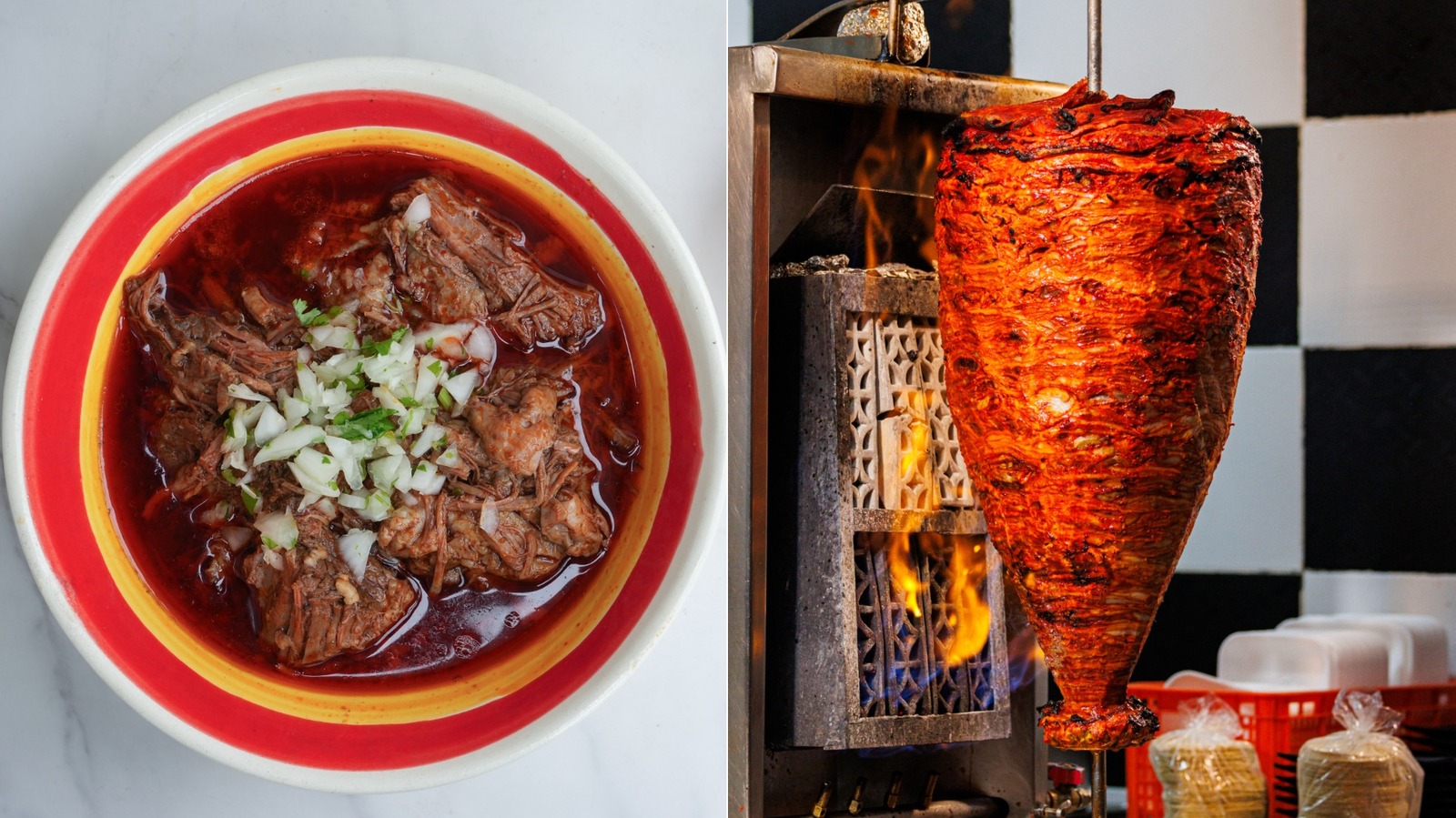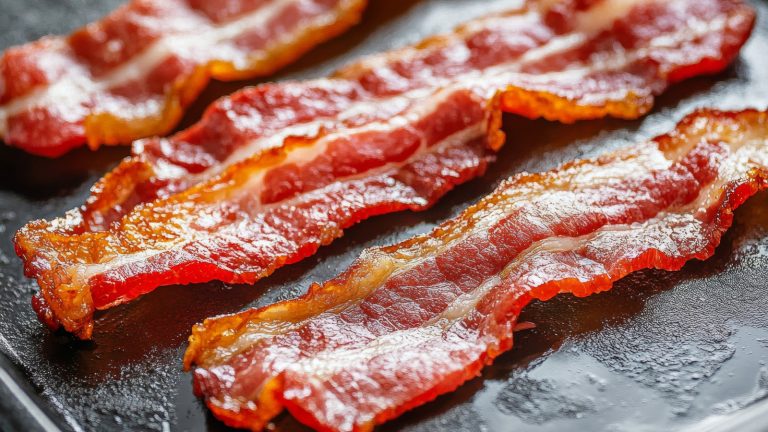Even if you’re only faintly knowledgeable about Mexican cuisine, chances are you know two if its most iconic dishes: tacos al pastor and birria. In the United States, the latter was perhaps a bit more niche until around 2020, when it suddenly exploded in popularity across the country. While these are both popular dishes, they shouldn’t be confused, as they’re actually not particularly similar. All it takes to realize this is a quick glance at either of these dishes being prepared. Al pastor (meaning “shepherd’s style” in Spanish) is a spit-roasted meat, while birria is a soupy stew.
Some people may believe that both al pastor and birria are types of tacos, although this is not totally correct. “Al pastor” refers to the cooking style for the meat (on a large rotating spit, like shawarma), although any confusion is understandable since this meat is typically served on tacos. Meanwhile, birria is actually a type of meaty stew — a thin consommé, to be precise. It’s made with plenty of chilis, herbs, and spices, with meat cooked until it’s super-tender. This can be eaten alone, but you may find birria tacos, which take the meat and put it in tortillas. The tacos are then dipped in the soupy-stew, not unlike a French dip sandwich. The tacos may also be fried until crisp. Birria tacos may be seen as more of a dish for Americans or Mexicans who have become culturally fairly American, although they’ve started to appear in Mexico, too.
What to know about birria
While mainstream knowledge of birria may be recent in the United States, the dish has been around for centuries. It hails from Jalisco, a Mexican state on the Pacific coast, home to the cities of Guadalajara and Puerto Vallarta. It’s alternately described as a soup or a stew, and it dates back to the arrival of the Spanish in Mexico. They brought goats with them, which Indigenous people used for meat. The Spanish deemed goat meat less appealing and used the term “birria” (at that time meaning “worthless”) to describe the stew.
Of course, if you’ve tasted a decent birria, you’ll know that this description from the Spanish colonizers is far from the truth. It’s a flavor sensation thanks to its complex list of ingredients. These include various chiles (ancho, pasilla, guajillo); spices like cloves, cinnamon, and ginger; aromatics like onions and garlic; and herbs like cilantro and oregano. The meat is seared and the chiles are toasted and blended with spices, and the whole thing is left to cook slowly so the flavors mingle. With so much flavor, it’s often served as a special dish at celebrations like weddings. But birria has evolved, it’s now common to find it made with beef or lamb. The beef version is now common in Tijuana (which is not part of Jalisco), and since it’s slow-cooked, tough cuts work fine. Of course, birria tacos are another key evolution. You may also encounter “quesabirria,” which takes the same approach as birria tacos but with cheesy quesadillas dipped into the stew.
What to know about al pastor
Al pastor–style meat is a newer creation, although it’s modern form has been around in Mexico since at least the 1960s. If you’ve ever seen al pastor cooked, you may have thought that it resembles shawarma — and you’re right to make this connection. Al pastor is a fusion dish created by Lebanese immigrants to Mexico in the 19th and 20th centuries. Many settled in the city of Puebla, where they served “tacos arabes” (“Arab tacos”), more or less shawarma, with a pita-style bread. They made them with lamb, but over time the standard al pastor meat became pork. It also shifted to being served on corn tortillas (although the more shawarma-style tacos arabes can still be found in Puebla). What would now be considered tacos al pastor started to be served in Mexico City around the 1960s.
While the cooking style may be Lebanese, the ingredient list for al pastor has become Mexicanized. The meat is marinated with ancho, pasilla, and guajillo chiles and earthy, deep-red achiote paste, plus Mexican staples like cumin, oregano, and cinnamon. In a restaurant, the meat is shaved off the spit shawarma-style, while at home you might grill or sauté the meat. For tacos, the meat is served with toppings like onion and cilantro, plus the unique addition of pineapple — a tasty treat that is decidedly nothing like birria, even if it’s equally delicious.







